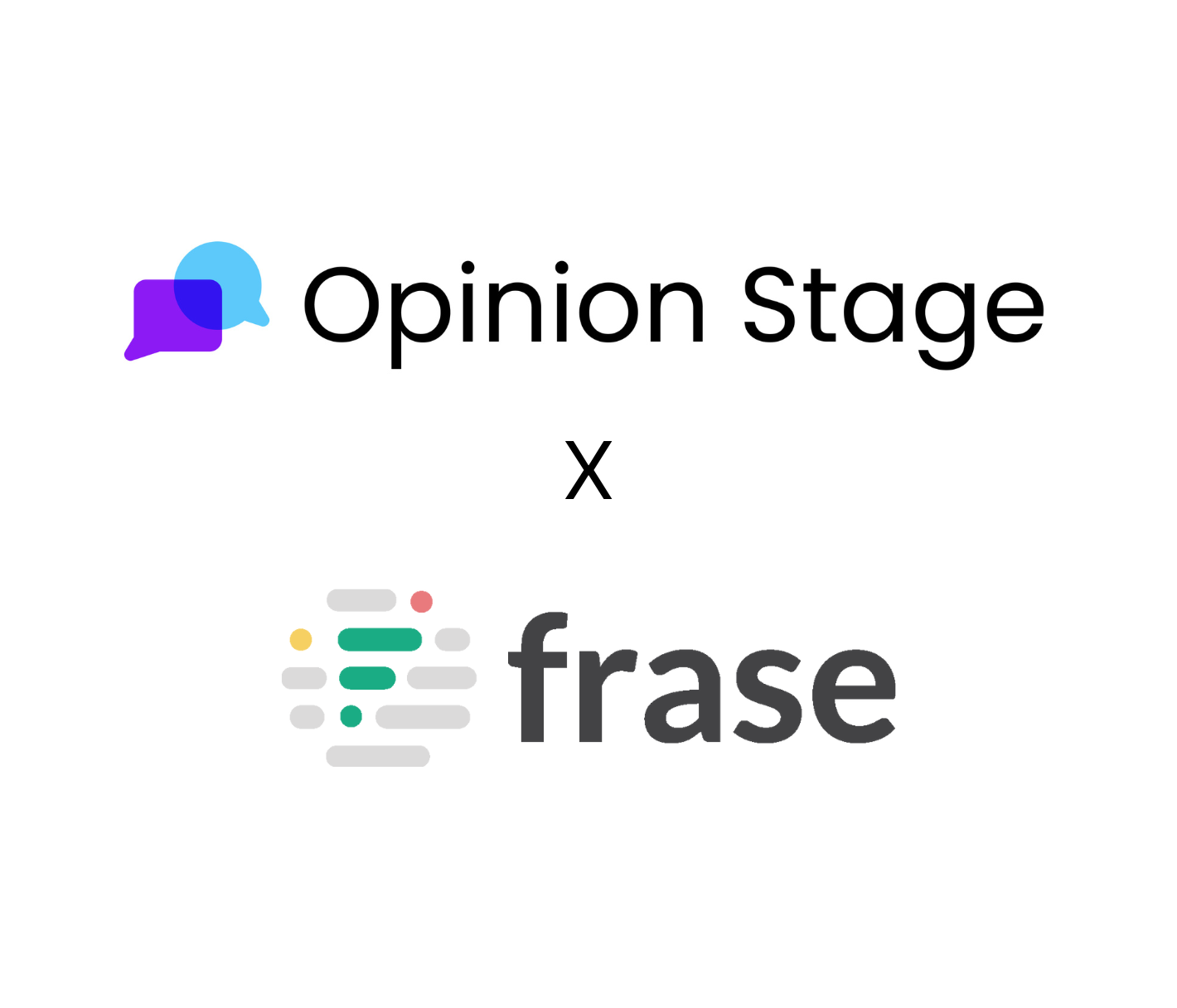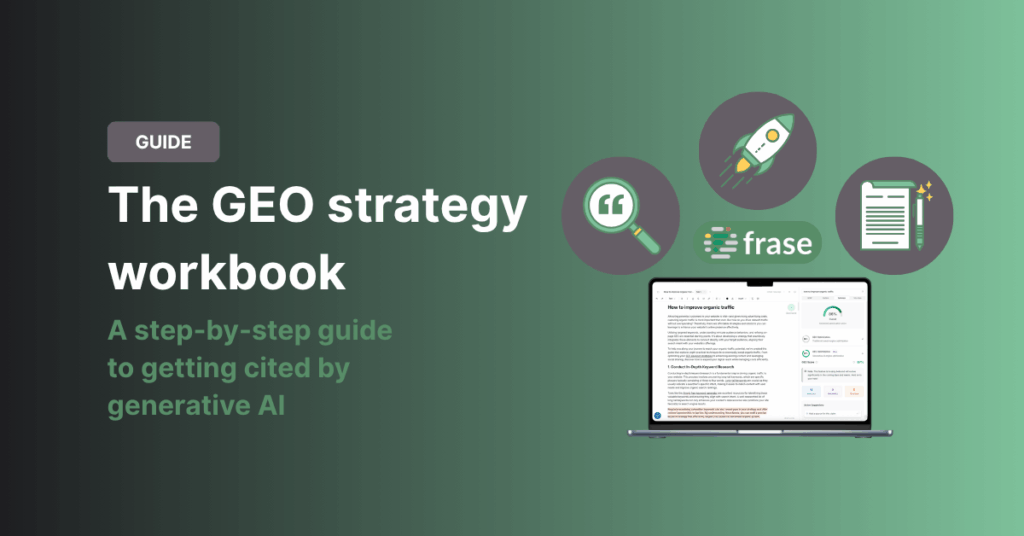The GEO strategy workbook: A step-by-step guide to getting cited by generative AI
ResourcesUnlock Premium Content
Welcome to the fast lane of content optimization. If you’re a content marketer, SEO pro, or digital strategist looking to stay ahead of the AI curve—this one’s for you.
This workbook takes the key ideas from Frase’s guide to Generative Engine Optimization (GEO) and turns them into a practical, repeatable system. You’ll go from understanding how generative engines find content to building your own strategy that gets surfaced, cited, and shared by tools like ChatGPT, Perplexity, and Claude.
Let’s get you GEO-ready.
🛠️ Pro tip: We suggest having a notepad handy as you go through this exercise—this is a workbook after all!
Below, you’ll not only find explanations of every step of the strategy, but you’ll find actionable exercises in the form of charts and prompts you can fill out to get your strategic juices flowing!
Contents
Welcome to the fast lane of content optimization. If you’re a content marketer, SEO pro, or digital strategist looking to stay ahead of the AI curve—this one’s for you.
This workbook takes the key ideas from Frase’s guide to Generative Engine Optimization (GEO) and turns them into a practical, repeatable system. You’ll go from understanding how generative engines find content to building your own strategy that gets surfaced, cited, and shared by tools like ChatGPT, Perplexity, and Claude.
Let’s get you GEO-ready.
🛠️ Pro tip: We suggest having a notepad handy as you go through this exercise—this is a workbook after all!
Below, you’ll not only find explanations of every step of the strategy, but you’ll find actionable exercises in the form of charts and prompts you can fill out to get your strategic juices flowing!
Step 1: Define Your Topical Entity
Goal: Anchor your content strategy around what you want to be known for.
Generative engines don’t just guess who the experts are—they use structured data, authority signals, and entity recognition to connect the dots.
Action Items:
- Identify your core entity (brand, product, topic)
- Map related subtopics and supporting terms
- Claim and optimize public-facing profiles (LinkedIn, Crunchbase, Wikipedia)
Workbook Exercise: Build Your Entity Map
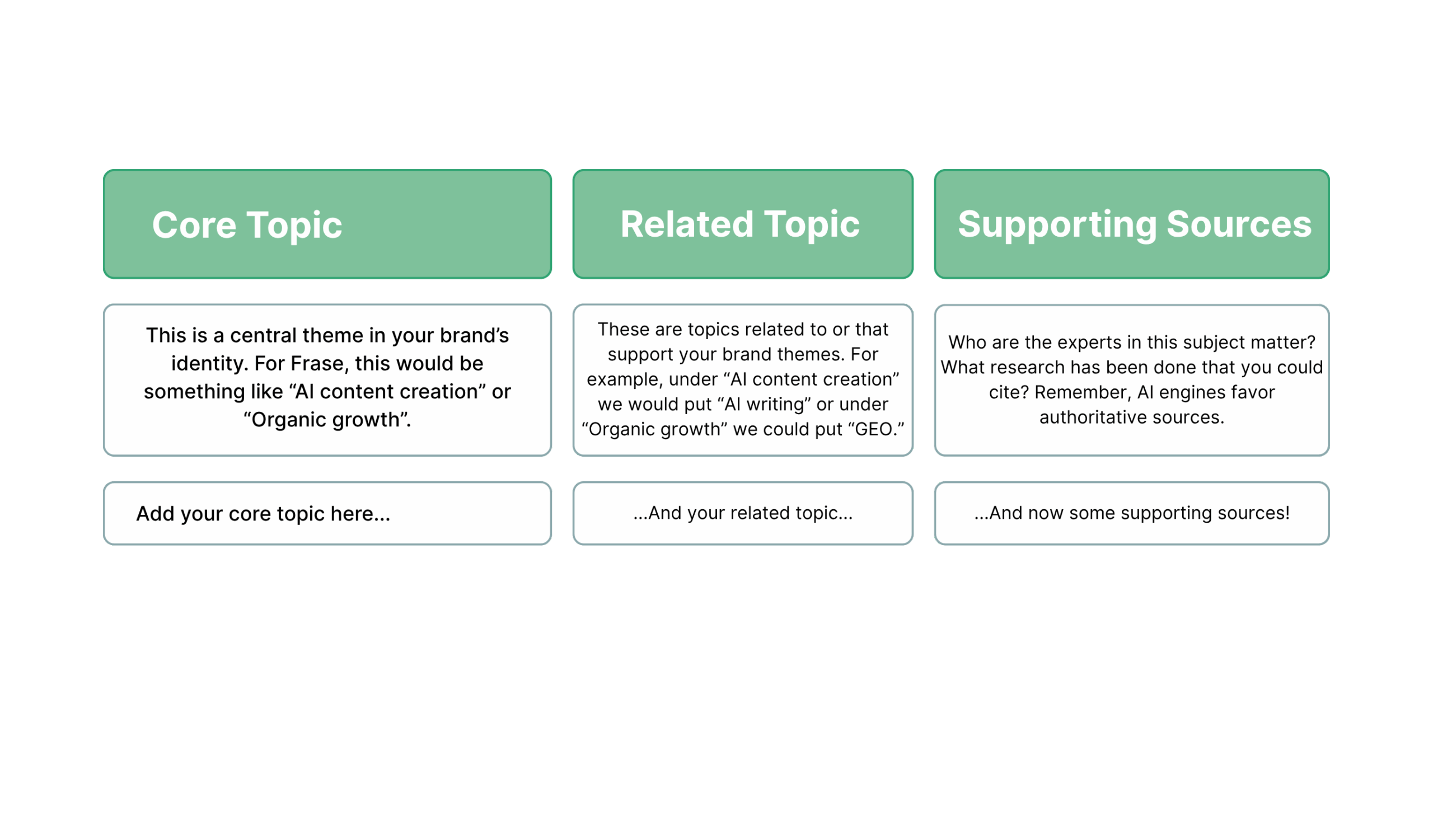
🛠️ Pro tip: Use tools like Google’s Knowledge Graph, Wikidata, or Frase’s SEO Analytics to discover how you’re currently positioned.
Step 2: Audit Your Existing Content for GEO Signals
Goal: Spot and strengthen the content you already have.
Generative engines look for three key traits before citing content:
– Authority: Are you trustworthy?
– Structure: Is your content scannable?
– Readability: Is your message clear and direct?
GEO Content Audit Template
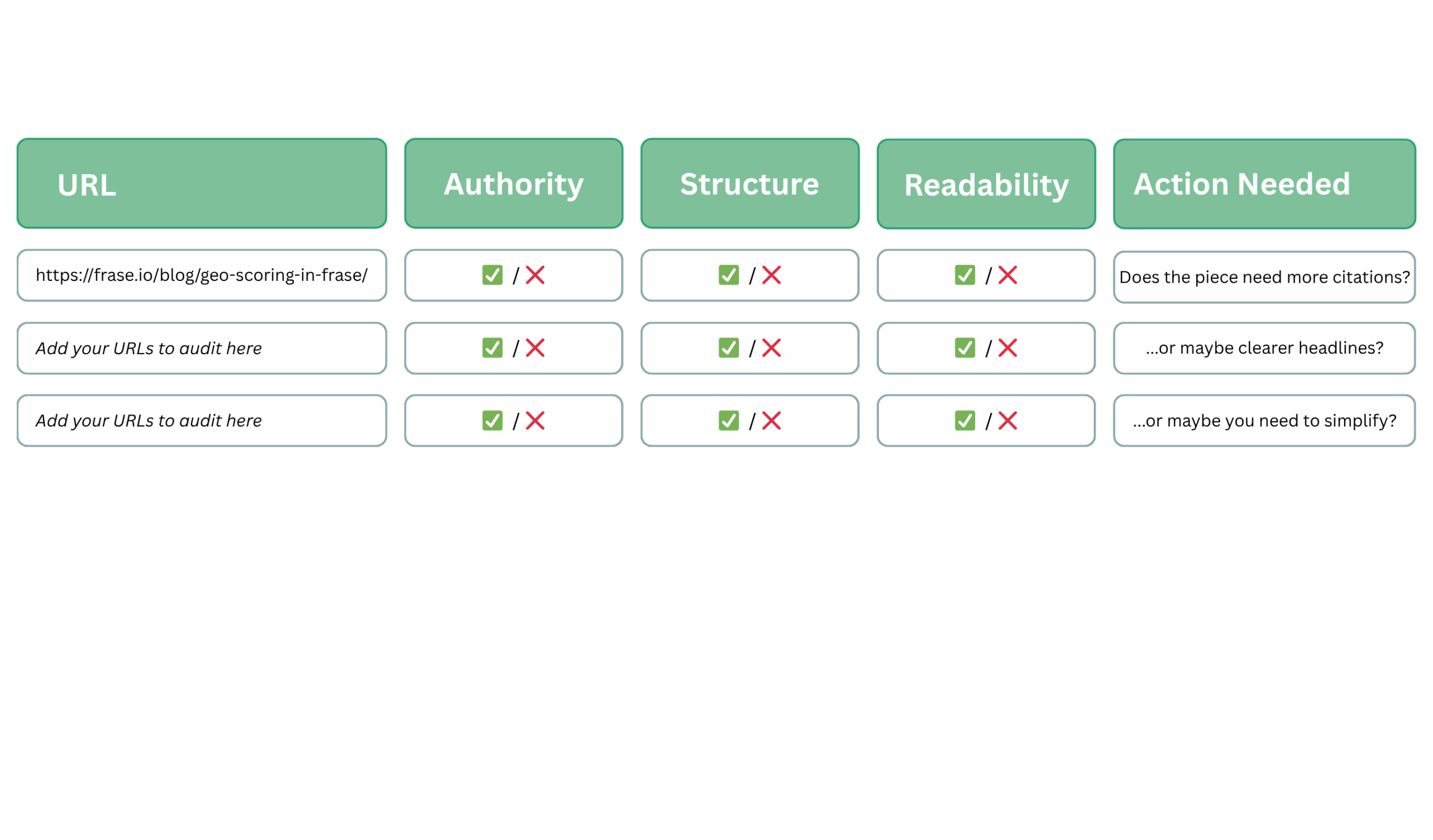
Questions to ask:
– Does this page cite credible sources?
– Are headers, lists, and tables used?
– Would a language model find a clear, pullable answer here?
🛠️ Pro tip: You can perform this audit manually, or you could simply use Frase’s Content Optimization feature, which creates a GEO Score for you based on these three criteria. It also provides actionable suggestions for how you can improve your score!
Simply enter your URL for existing content, copy and paste a draft, or generate content from scratch in minutes.
Try out GEO Score in Frase today!
Try Frase for Free!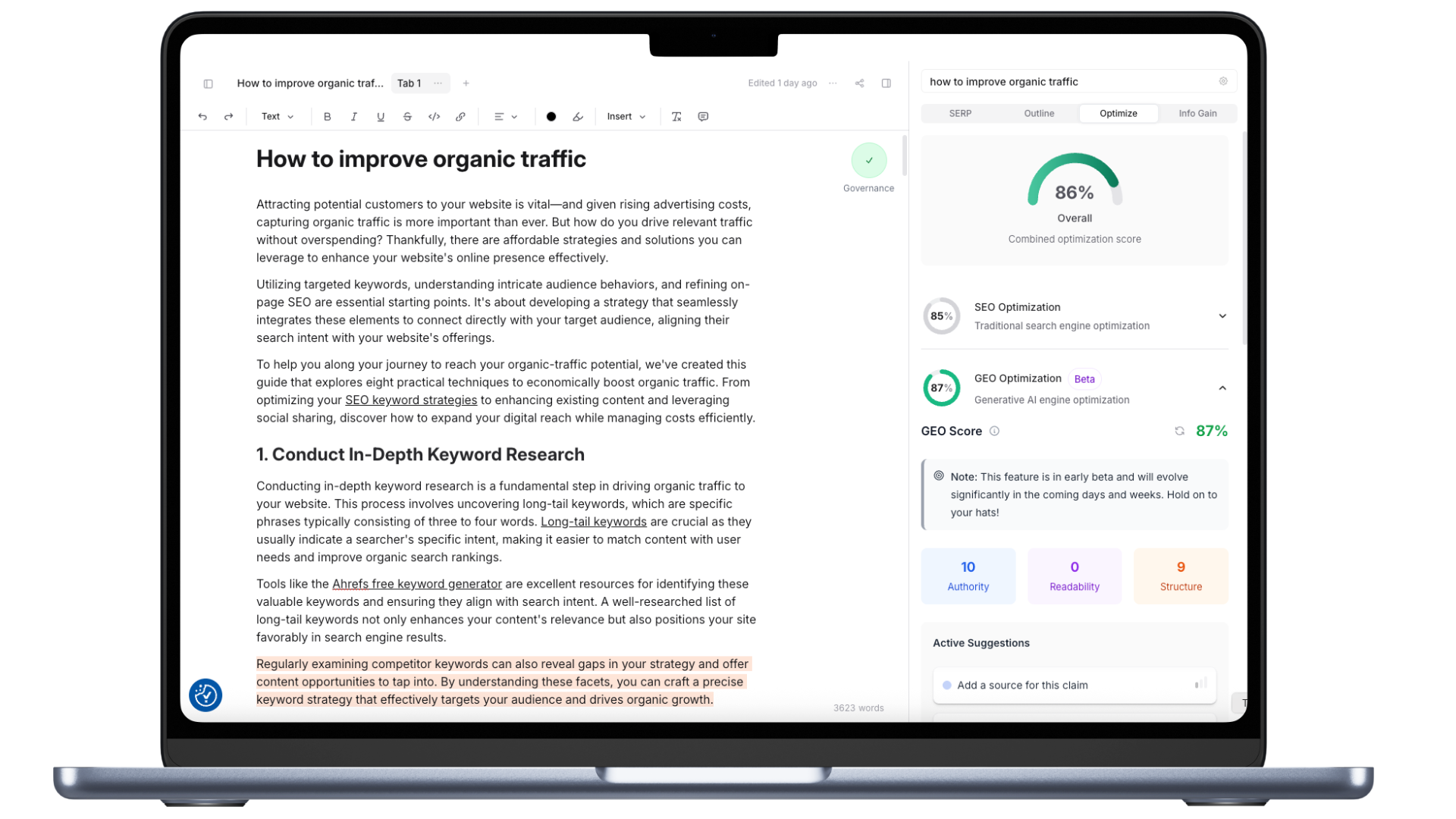
Step 3: Match Your Content to GenAI Prompts
Goal: Align your content with the way people actually ask questions.
Generative engines surface content in response to:
– What is…?
– How to…?
– Best tools for…
– [X] vs [Y] comparisons
– Statistics about…
Exercise: Turn Topics into Prompts

Think like a user—and like an AI. What questions are being asked that you should answer?
Step 4: Create Generative Engine Optimized Content Briefs
Goal: Build content that checks every box for generative visibility.
Every piece you publish should:
– Target a specific prompt
– Reinforce your entity and expertise
– Include structured formatting (H2s, bullet lists, tables)
– Reference other authoritative sources
– Be written by—or attributed to—a credible author
Use This Brief Template
- Target Prompt:
- Topic Entity:
- Supporting Sources:
- Outline: [Include subheads]
- Internal Links: [List key pillar pages]
- Call to Action:
📌 Tip: Keep readability top of mind. Write like you’re answering a smart question on the spot.
We know there are plenty of pieces of content briefs you need to create, and Frase can come to your rescue! Frase enables you to create well-researched content briefs that cover all the topics above in minutes.
Watch this video to see how!
Step 5: Distribute & Index Your Content Strategically
Goal: Make sure your content is seen, crawled, and trusted by generative engines.
You need both coverage and credibility:
Your GEO Distribution Checklist:
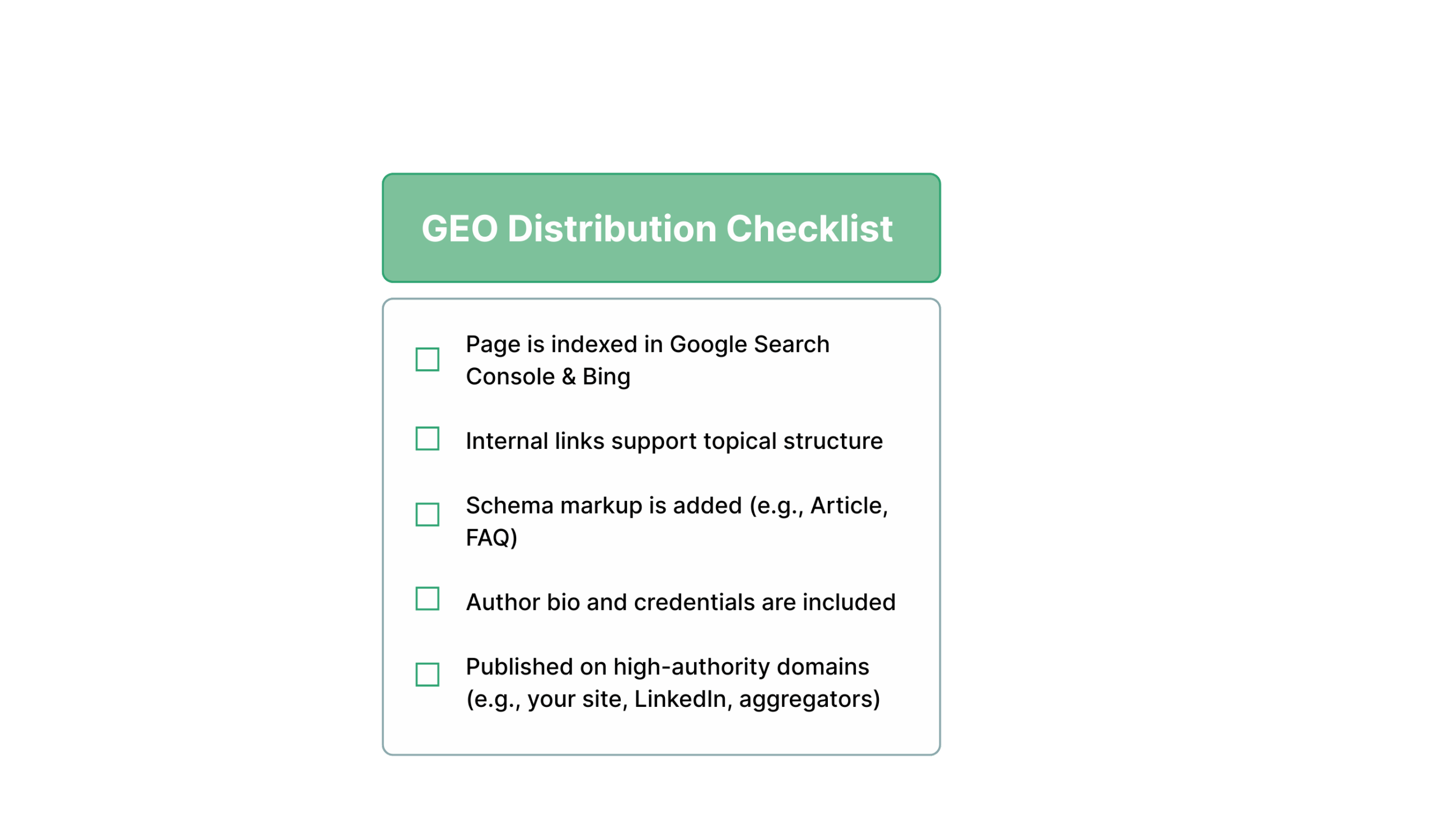
🔁 Bonus move: Repurpose your content into slides, videos, or answers on Q&A sites to expand digital footprints.
Step 6: Monitor and Optimize GEO Performance
Goal: Track visibility and adapt to win citations over time.
What to Watch:
- Increase in branded queries in Google Search Console
- Mentions or snippets in AI-generated answers
- Pages gaining impressions or visibility on genAI-powered engines like Perplexity
- Increase in branded queries in Google Search Console
- Mentions or snippets in AI-generated answers
- Pages gaining impressions or visibility on genAI-powered engines like Perplexity
GEO Tracker Worksheet

📈 Pro tip: Use Frase’s GEO Score tool to benchmark and improve individual pieces.
Final Step: Build Your GEO Plan
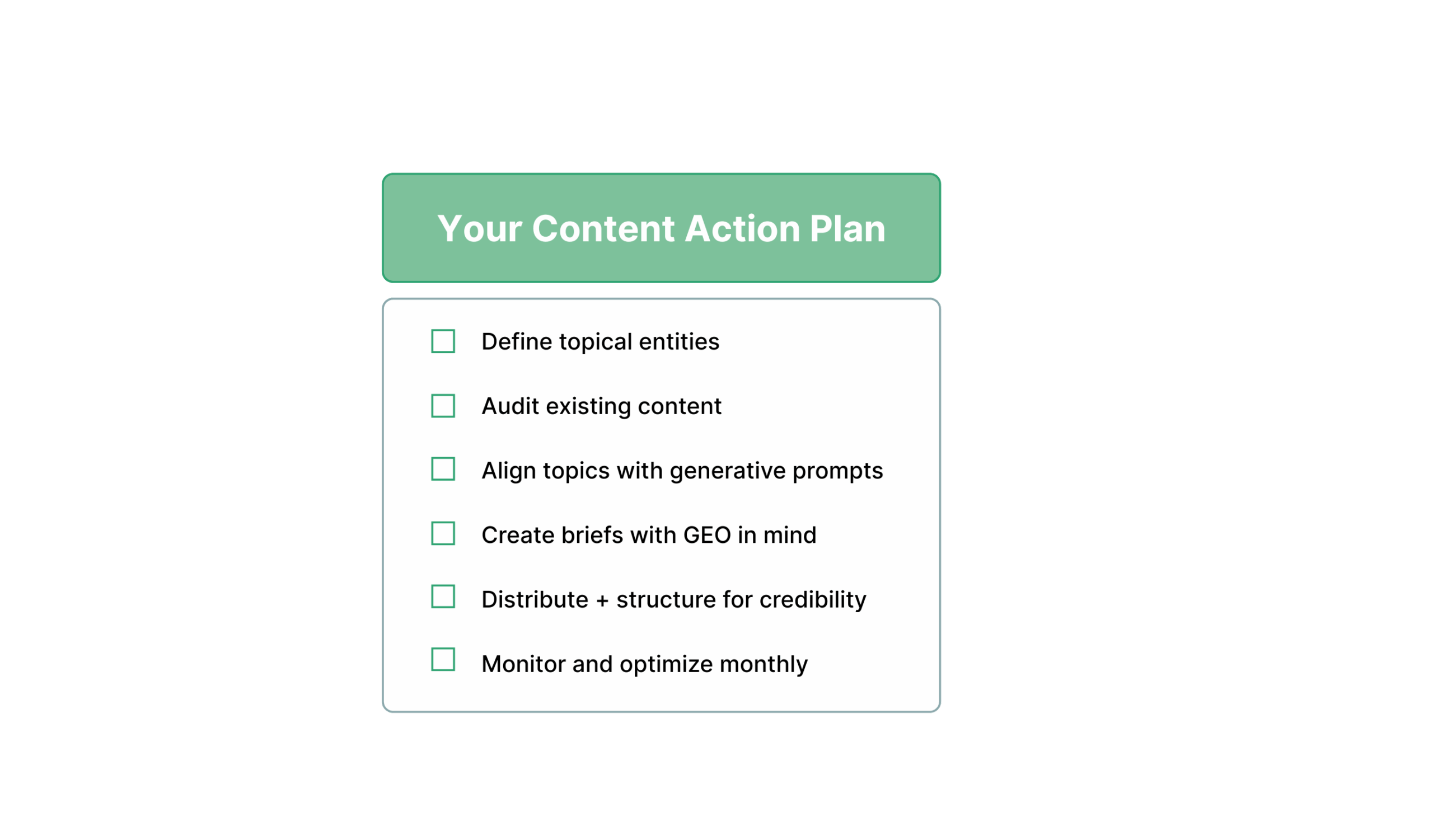
Ready to See Your GEO Score?
Check out the GEO Score in Frase, a new Content Optimization feature that grades your content across the three signals AI engines care about most:
✔️ Authority: Frase surfaces missing and reputable sources to help you earn citations.
✔️ Readability: We flag overly complex copy so you can simplify fast.
✔️ Structure: Frase finds gaps in headlines, transitions, and formatting to make your content AI-discoverable.
With Frase, you can research, outline, write, and optimize content that’s not just top-ranked—but AI-referenced and widely shared.
Add GEO into your workflow with Frase!
Get Started
